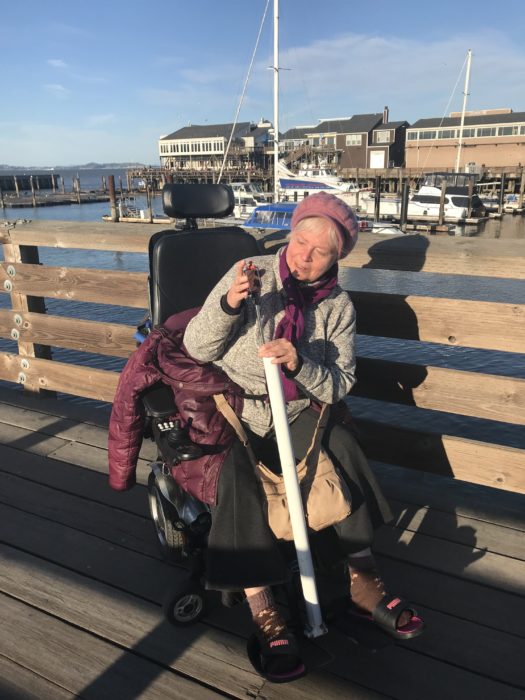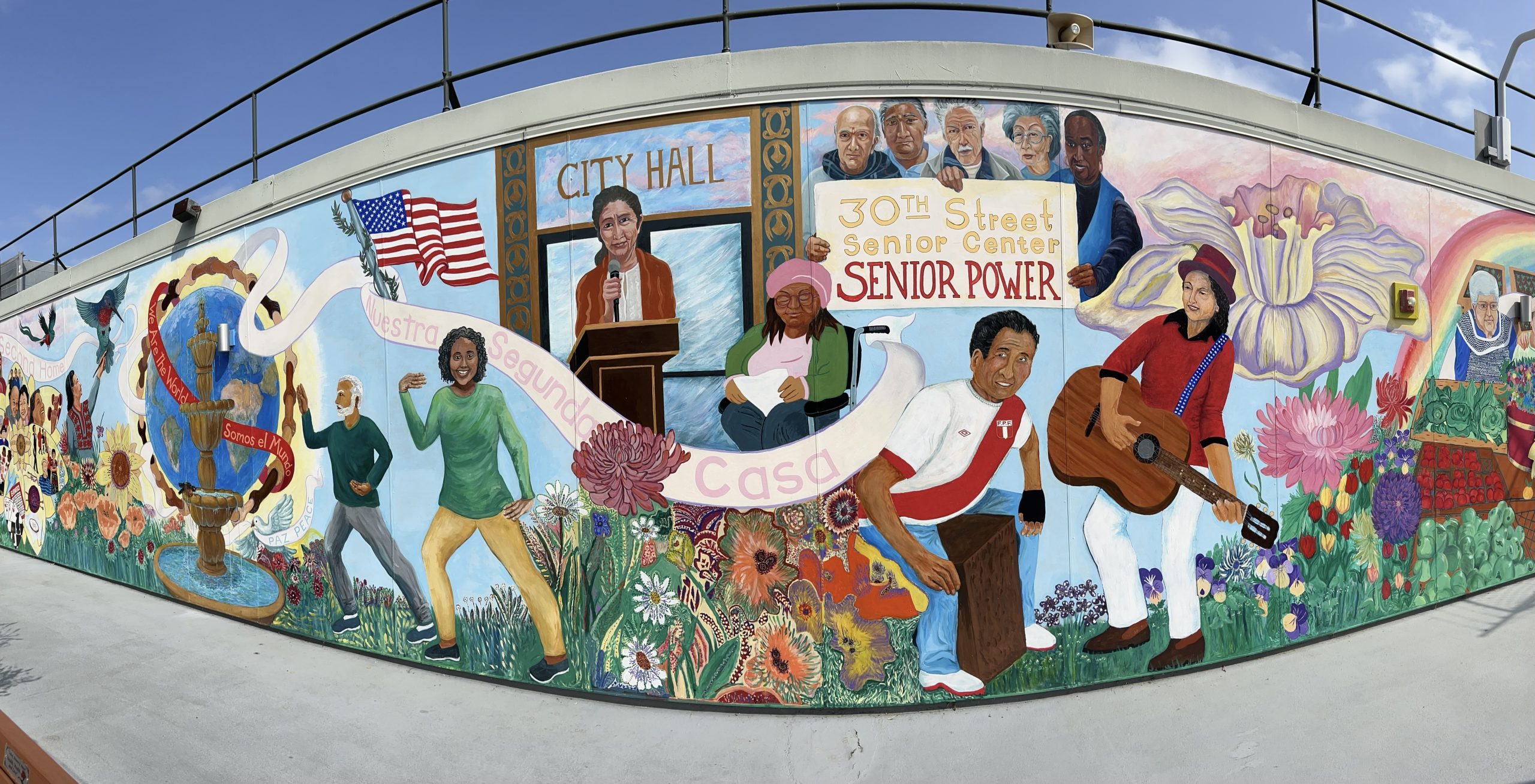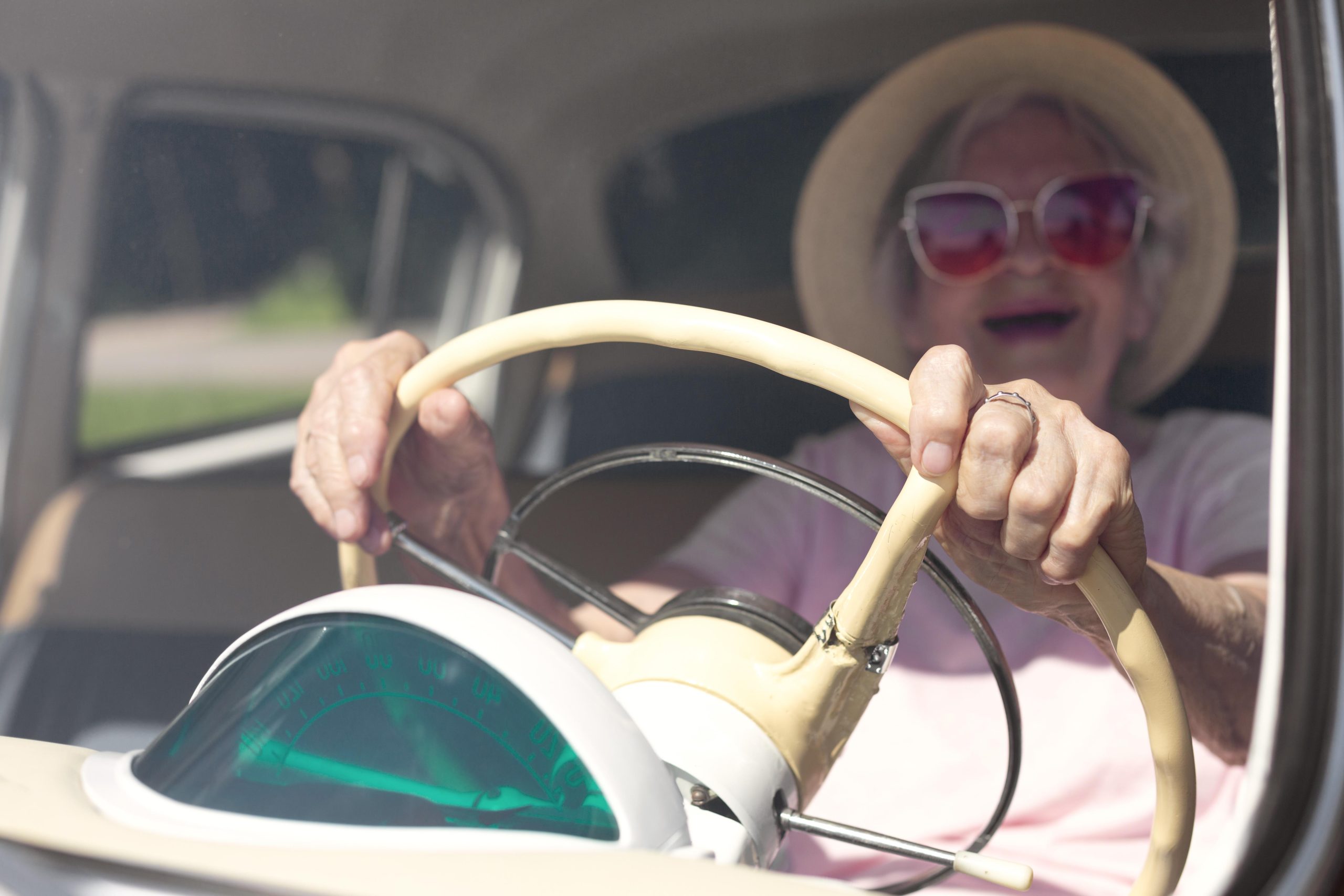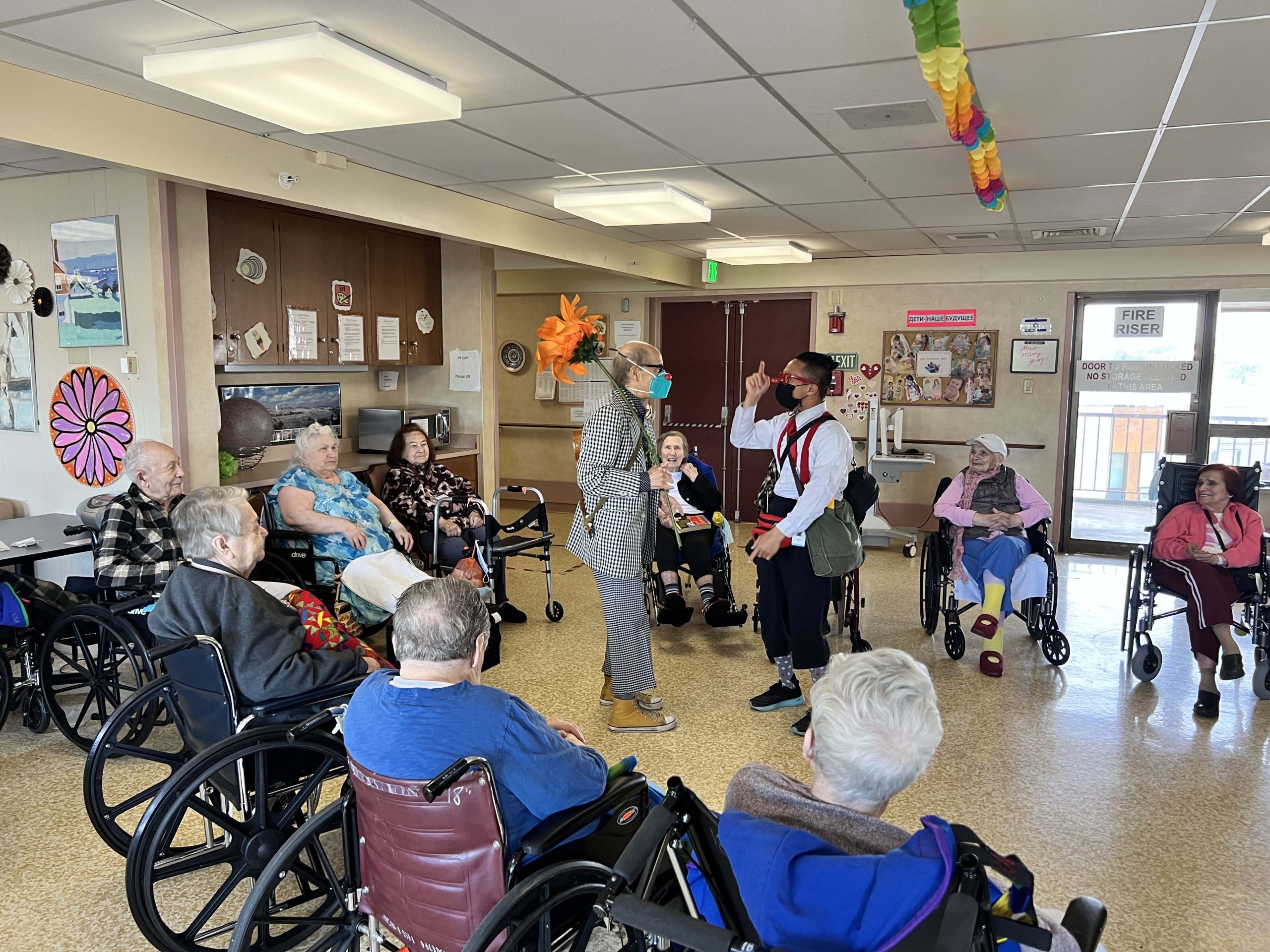Obstacles prove plenty for active woman when a wheelchair enters her life
Peggy Coster’s life at 69 is full and busy. But hers requires a lot more planning – and patience than most people’s.
At the age of 39, after having lived a relatively healthy existence, she was diagnosed with post-polio syndrome. Since then, she has had to rely on a wheelchair to get around. And sometimes pure faith.
Just crossing the street can be frustrating when unaware pedestrians stand in the curb cut, she said. Often when dining out, she gets seated near the kitchen. At social events, she often gets overlooked or treated as invisible. She recognizes that making space for the wheelchair can be inconvenient, but it has discouraged her from volunteering. “When I usually really get upset is when I’m forced to sit in a certain spot when my friends are across the room or moving around the crowd.

Paratransit vans or taxis can take her to places too far away for a wheelchair, but she said it’s hard to be spontaneous with reservations required 24 hours ahead of time. And there’s not much room for unexpected delays. “When the van comes, I have only five minutes to get out to it, or it leaves without me.”
Although a wheelchair has made it possible for her to get out and about, they do break down and have to be repaired or replaced. “I’m on my sixth wheelchair,” she said. And they’re not easy to get if you need financial assistance. “I’ve had to fight with Medicare, hire lawyers, deal with unscrupulous companies and, once, borrow money to obtain a functioning chair.”
Even with a working wheelchair, the environment can still pose obstacles. MUNI ramps are slippery in the rain. “But, if it’s raining too hard I don’t go out.” That may mean she misses her appointments, exercise in the pool, her job or neighborhood errands.
Maintaining everyday connections
For most trips in the neighborhood, she gets around in a motorized wheelchair. One of her regular stops is the neighborhood pool, where she swims for exercise. The pool has a chair that helps her enter the water, and there’s one in the showers as well.
Her condition doesn’t derail her, but it does require attention. Twice a month, Coster sees both an osteopath and an acupuncturist. “I get cooking herbs from a Chinese herbalist in Chinatown. These herbs reduce the pain from arthritis and without them I wouldn’t be able to walk at all.”
Such regular connections are especially important to Coster. She also shops on a daily basis even though she might not need any food. “Having a limiting disease is isolating. The checkers at Trader Joe’s know me, chat, and look forward to seeing me the next day.”
Continuous moderate exercise and healing work are what allows her to work, socialize and indulge her hobbies. She helped interview people for the Bay Area Holocaust Oral History Project. She writes non-fiction pieces and creates video, which she learned at San Francisco Public Access Television. She won an award for a piece on wheelchair accessibility and ended up on its board of directors. “My interest in video probably started in high school when I learned the power of words,” said Coster, who has a degree in English from Washington State University.
Avoiding paralysis at age 5
Today, she supplements her Social Security income by archiving and editing video part-time for the San Francisco Community Living Campaign. Her position is paid for by the San Francisco ReServe program, which places seniors and people with disabilities in government and in nonprofit jobs. “I love what I’m doing, but the computer work is really hard on my body.”
How much to exercise is a balancing act. “I have to exercise to the extent I can still move or lose whatever physical ability I have. I need a motorized wheelchair because if I overdo exercise, I could also lose the use of my muscles.”
Post-polio syndrome, mainly characterized by weakening muscles, can affect polio survivors years after recovery from the initial attack.
Coster contracted polio at the age of five. She was able to avoid paralysis by following a rehabilitation regimen rather than months of strict immobilization – being strapped onto frames then put in metal braces. “Without that treatment, I would have been paralyzed for life,” she said.
The regimen was developed by Australian Army nurse Sister Elizabeth Kenny for treating infantile paralysis. It involved applying moist, hot compresses to ease muscle spasms and gently exercising the paralyzed muscles.
Avoiding the worse effects of polio, Coster led a fairly normal life. Her parents saw to it that she was active in childhood. She taught herself to ride a bike. “I loved doing the hula hoop and was very good at it,” she said. But by high school, she began experiencing extreme fatigue so her mother excused her from physical education classes. “In hindsight, she made a big mistake,” Coster said. “I now know how much exercise increases mobility.”
A drastic shift after 39 years
After having lived her life fairly well for nearly 40 years, Coster faced a new reality in 1989. While working as an administrator at the Bank of America, she began “suffering from extreme fatigue and at some point, I couldn’t walk anymore,” she said. ”I had to go out on disability.”
It took her three years to get her first wheelchair. But she still couldn’t get out of her Tenderloin apartment. “The only way out of the building with a wheelchair was the exit to the parking lot and that was blocked.”
She began trying to find a new place to live, but you had to stand in line to get on a public housing list and she couldn’t do that. She finally got on the appropriate lists by contacting U.S. Rep. Nancy Pelosi’s office.
After nine months, she found place in North Beach, at Wharf Plaza. Moving turned Coster’s life around. “I was overjoyed,” she said. Her apartment is on the ground floor with an opening to an outdoor atrium, making access easy.
“I love going over to Fisherman’s Wharf to be near the water and swimming in our local neighborhood heated pool,” she said. “I’m happier now. People remember me because of the chair. I act like I know all these people and maybe I do.”
It’s possible. She describes herself as naturally friendly. “I say ‘hi’ a lot, and that’s probably why people talk to me so easily. I don’t really have a problem starting conversations much of the time.”
She learned to make friends with people on the street while working at St. Anthony’s Dining Room Foundation in the Tenderloin. Before she was old enough to use senior centers, she said, “I used to make friends with people in shops. You just have to have money to spend for that. It can be very lonely being disabled and unable to access places like senior centers.”





